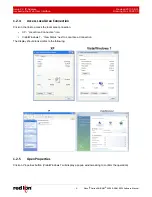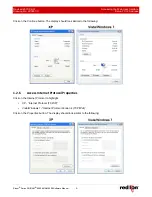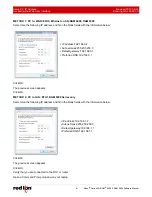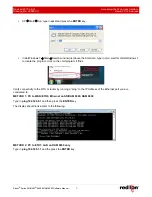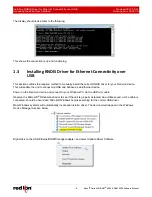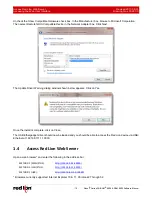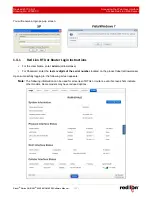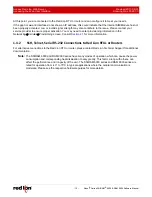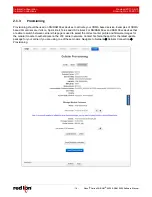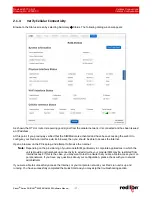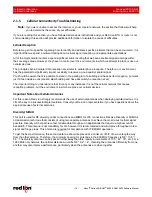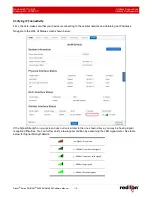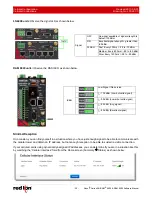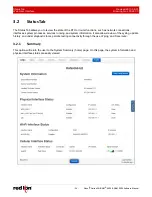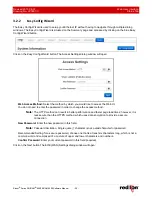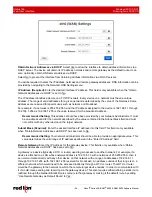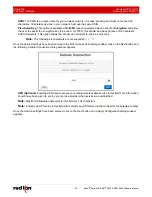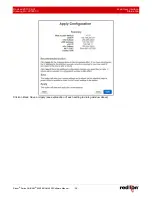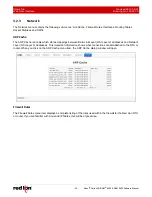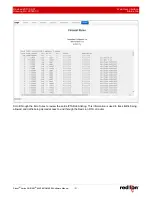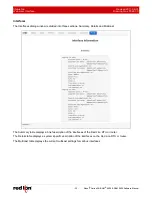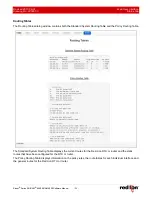
Cellular Configuration
Revised 2017-08-31
Cellular Connections
Drawing No. LP0997-C
- 18 -
Sixnet
®
Series SN/RAM
®
6000 & RAM 9000 Software Manual
2.1.5
Cellular
Connectivity
Troubleshooting
Note:
If you were unable to access the Internet, or your corporate network, the section that follows will help
you to determine the cause of your difficulties.
If you are reading this section, you have followed all previous instructions and your Red Lion RTU or router is not
communicating, this section will provide additional information to isolate the cause of difficulties.
Cellular
Reception
Before we get into specifics regarding how to identify and address specific problems that can be encountered, it is
important that we spend a moment talking about cellular signal reception, and appropriate expectations.
All of the major cellular carriers expend significant sums insuring that we have excellent signal coverage within
their coverage areas. However, they have no control over the environments in which we attempt to place or use our
cellular devices.
The principles behind cellular data reception are similar to cellular phone reception. Therefore, our environment
has the potential to significantly impact our ability to receive a good quality cellular signal.
You should be aware that it is possible to stand in the parking lot of a building and have perfect reception, but walk
just 10 feet inside a concrete and steel building and have absolutely no reception at all.
The important thing to understand is that in many, many instances it is not the cellular network that causes
reception problems, but the environment in which we place our cellular devices.
Important
Note
about
Cellular
Antennas
For this reason, Red Lion strongly recommends the use of external antennas when deploying cellular devices. It is
often the key to a successful implementation. Consult your Red Lion representative if you have questions about the
appropriate use of external antennas.
Diversity/MIMO
This port is used for RX diversity on 3G connections and MIMO for LTE connections. Receive Diversity or MIMO is
a transmission technique that consists of using two separate antennas to achieve the most robust cellular signal
possible. Diversity will help achieve fast, reliable data throughput in applications that require a high amount of
bandwidth. This antenna is not mandatory for 3G, however it is recommended and will improve throughput in low
signal and fringe areas. This antenna is required for compliance with LTE MIMO operation.
To get the best performance, this second antenna should be placed at a minimum of 5/8 of a wave length away
from the other antenna. Therefore, the minimum spacing for antennas in the 800 MHz frequency is 5/8 * 13.5” =
8.5”. The diversity antenna can be spaced further away than this, ideally in increments of 13.5”, 22”, 35”, etc. For a
1900 MHz only network, the optimal distance would be 5/8 * 6.2” = 4”. Orienting the antennas differently from one
another may also improve performance, particularly when the antennas are close together.

